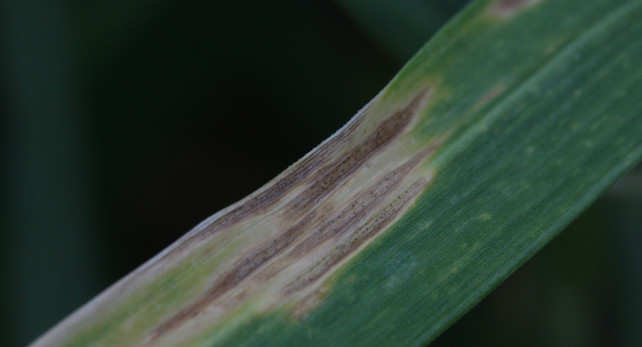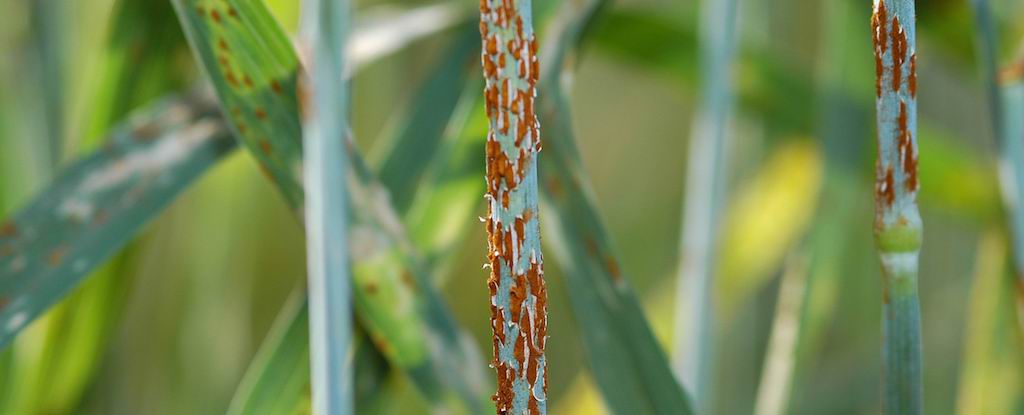Products You May Like
Fungi pose a significant threat to crops worldwide, scientists warn in a new commentary, with increasingly “devastating” effects on our food supply.
We tend to worry more about pathogens that sicken humans directly, especially viruses and bacteria. But while corn smut and stem rust might not scare us like Ebola or E. coli, maybe they should.
Such fungi are already wreaking havoc, with growers globally losing up to 23 percent of their crops to fungal infections every year. Fungi claim another 10 to 20 percent after harvest, they add.
Due to their effects on five of the world’s top calorie crops – rice, wheat, corn, soybeans, and potatoes – fungi currently destroy enough food to provide 2,000 calories every day for one year to between 600 million and 4 billion people.
And it’s getting worse thanks to a “perfect storm” of factors leaving swaths of farmland dangerously vulnerable to fungi, according to University of Exeter plant pathologist Sarah Gurr.
Even if they don’t turn us into zombies, as a fictional fungus (or slime mold) does to humans in the HBO drama The Last of Us, these fungi are no less of a nightmare, Gurr warns. Also, they’re real.
“While the storyline is science fiction, we are warning that we could see a global health catastrophe caused by the rapid global spread of fungal infections as they develop increasing resistance in a warming world,” she says. “The imminent threat here is not about zombies, but about global starvation.”
Farmers have battled fungi for millennia, but not quite like this, write Gurr and co-author Eva Stukenbrock, an environmental genomicist at the Christian-Albrechts University of Kiel.
Climate change is one key difference since the extra warmth is helping some fungi extend their ranges (among other unsettling adaptations), including species that threaten major food crops.
Humans have invited this crisis in other ways, too, the researchers write, like establishing vast monocultures of genetically similar crops, which are especially susceptible to fungal outbreaks.
And while fungicides have helped growers fend off those outbreaks in recent generations, fungi are finding ways around even the most robust defenses, Gurr and Stukenbrock explain.
Many fungicides work by targeting just one cellular process, allowing space for fungi to evolve resistance – an opportunity fungi seem eager to seize.

As fungicides loir efficacy on newly resistant fungi, frustrated farmers sometimes respond by using higher concentrations of the same fungicides, potentially making things worse.
With temperatures rising, pesticides failing, and large monocultures virtually defenseless against fungi, our crops are like sitting ducks.
And since more than 8 billion humans now inhabit Earth – many of whom already lack food security, often due to other effects of climate change – this is not the best time for fungi to wipe out food sources, Stukenbrock notes.
“As our global population is projected to soar, humanity is facing unprecedented challenges to food production,” she says. “We’re already seeing massive crop losses to fungal infection, which could sustain millions of people each year.”
Those losses are already a disaster in need of global attention, but the new commentary aims to highlight how bad the situation has become and how much worse it could still get.
“This worrying trend may only worsen as a warming world makes fungal infections more prevalent in European crops, and as they continue to develop resistance to antifungals,” Stukenbrock says. “This will be catastrophic for developing countries and will have a major impact in the Western world, too.”
Since humans helped make this mess, though, we at least have the power to fix some of it, Gurr and Stukenbrock argue.
Aside from the obvious yet elusive goal of curbing the emissions behind climate change, which is already vitally important for other reasons, there could be a few ways to better protect our crops from fungi in the near term.
Researchers at the University of Exeter have developed new techniques that might enable a novel class of fungicides targeting multiple cellular mechanisms, Gurr and Stukenbrock note, making it harder for fungi to evolve resistance.
Research suggests this type of antifungal may work against several major pathogens, they add, including corn smut, rice blast, and the fungus responsible for fusarium wilt in bananas.
Even without better fungicides, we might reduce the risk of fungal outbreaks just by adopting better farming practices, Gurr and Stukenbrock suggest, pointing to a project in Denmark that found success against fungal infections by planting genetically diverse seed mixtures.
“Fungal infections are threatening some of our most important crops, from potatoes to grains and bananas,” Gurr says. “We are already seeing massive losses, and this threatens to become a global catastrophe in light of population growth.”
The commentary was published in Nature.
